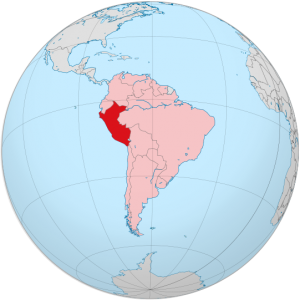NewsDesk @bactiman63
In Peru, the Ministry of Health (Minsa) , through the National Center for Epidemiology, Disease Prevention and Control (CDC Peru) , launched the epidemiological alert for dengue cases in Lima and other regions of the country, in order to strengthen the system of surveillance and epidemiological investigation and provide preparedness and response measures at the national level.

Until Epidemiological Week (EW) 05-2022, 5,218 cases of dengue have been reported, with an incidence rate of 15.80 per 100,000 inhabitants. According to clinical form, 87.03% of the cases correspond to dengue without warning signs, 12.50% to dengue with warning signs and 0.48% to severe dengue, including 8 deaths, with a fatality rate of 0.15%.
82.1% (4,283) of dengue cases were concentrated in the regions of Ucayali, Huánuco, Cajamarca, Cusco, and San Martin. Piura, Junin and Loreto.
When comparing with the same period of the previous year, an increase in cases and even some dengue outbreaks was observed in the regions of Áncash, Lima, Cusco, Cajamarca, Huánuco, Ucayali, Pasco, Piura,Lambayeque, Puno and La Libertad.
In the province of Lima, in the last five years, outbreaks have occurred in the districts of La Molina, Lurigancho, Lima, Puente Piedra and Ate. The most important outbreak was in 2021 in Lurigancho, which reported a total of 531 cases of dengue.
In 2022, there are confirmed autochthonous cases of dengue in the districts of San Juan de Lurigancho (Diris Lima Centro), Lurigancho (Diris Lima Este), in addition to probable cases in Comas, Carabayllo and Puente Piedra (Lima Norte).
To eradicate the mosquito that transmits dengue, zika and chikungunya, the Ministry of Health (Minsa) , through the Directorate of Integrated Health Networks (Diris) Lima Norte , initiated the control and surveillance plan to eliminate the Aedes Aegypti vector of the dwellings of the prioritized districts of the aforementioned jurisdiction.
Subscribe to Outbreak News TV on YouTube
This time, around 40 entomological agents were deployed in Collique, in Comas, and visited house by house in search of the Aedes Aegypti vector that lives in the water containers that families store. Likewise, they educated about how the mosquito reproduces and the actions to eliminate it.
The executive director of the Directorate for the Prevention and Control of Metaxenic Diseases and Zoonoses of Minsa, Verónica Soto, indicated that during the summer actions against dengue are reinforced because families store more water and with this the conditions for the transmission of dengue are created. dengue.
“Every year we have dengue outbreaks, so in coordination with Diris Lima Norte, the local municipalities and the community, it was agreed to carry out interventions in February and March. Entomological agents will visit house by house to give educational talks and place larvicides in the water tanks that the family has,” Soto said.
- China reports 4th and 5th human H5N6 avian influenza cases of 2022
- Spain: Malaria case in woman prompts a number of hypotheses
- New partnership formed to battle malaria, lymphatic filariasis in the Asia Pacific
- Avian influenza reported in birds in Kentucky and Virginia
- Swedish Public Health Agency recommends 2nd booster for elderly
- Nigeria reports additional 58 confirmed Lassa fever cases in first week of February
- Panama: 1st hantavirus case of 2022 reported in Herrera province

